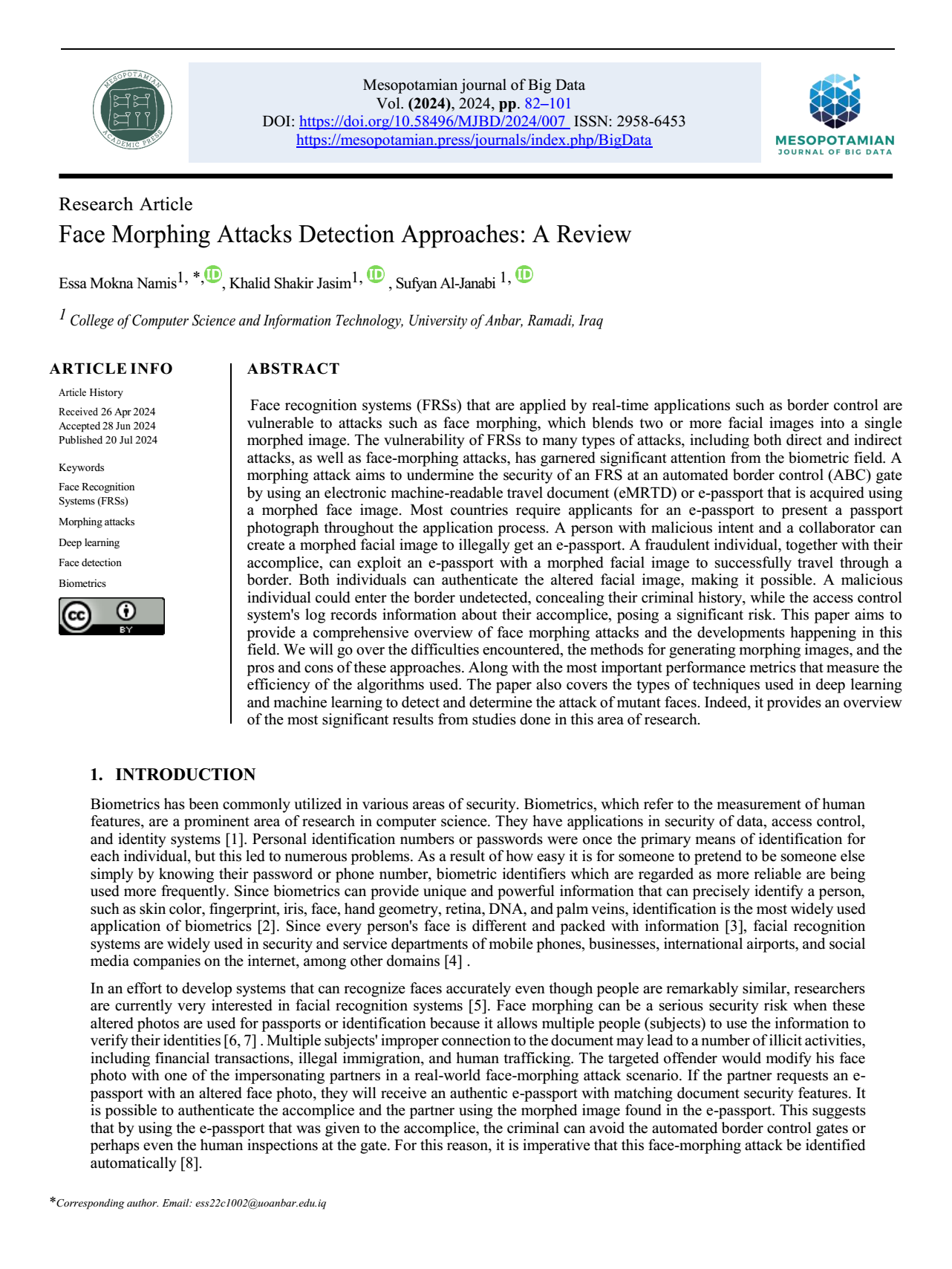Face Morphing Attacks Detection Approaches: A Review
Main Article Content
Abstract
Face recognition systems (FRSs) that are applied by real-time applications such as border control are vulnerable to attacks such as face morphing, which blends two or more facial images into a single morphed image. The vulnerability of FRSs to many types of attacks, including both direct and indirect attacks, as well as face-morphing attacks, has garnered significant attention from the biometric field. A morphing attack aims to undermine the security of an FRS at an automated border control (ABC) gate by using an electronic machine-readable travel document (eMRTD) or e-passport that is acquired using a morphed face image. Most countries require applicants for an e-passport to present a passport photograph throughout the application process. A person with malicious intent and a collaborator can create a morphed facial image to illegally get an e-passport. A fraudulent individual, together with their accomplice, can exploit an e-passport with a morphed facial image to successfully travel through a border. Both individuals can authenticate the altered facial image, making it possible. A malicious individual could enter the border undetected, concealing their criminal history, while the access control system's log records information about their accomplice, posing a significant risk. This paper aims to provide a comprehensive overview of face morphing attacks and the developments happening in this field. We will go over the difficulties encountered, the methods for generating morphing images, and the pros and cons of these approaches. Along with the most important performance metrics that measure the efficiency of the algorithms used. The paper also covers the types of techniques used in deep learning and machine learning to detect and determine the attack of mutant faces. Indeed, it provides an overview of the most significant results from studies done in this area of research.
Article Details
Issue
Section

This work is licensed under a Creative Commons Attribution 4.0 International License.
